Programmable Logic Control (PLC) solution from Cypress Semiconductor
Follow articleHow do you feel about this article? Help us to provide better content for you.
Thank you! Your feedback has been received.
There was a problem submitting your feedback, please try again later.
What do you think of this article?
Programmable Logic Controller (PLC), an industrial microprocessor-based controller, has been around since the late 1960s as a more efficient replacement to traditional mechanical relay systems. The latter was found to be less reliable and significantly harder and costly to troubleshoot.
Depending on the number of inputs and outputs (I/O), the size of the PLC system can vary from small modular devices to larger rack-mounted PLCs for more complex applications. In this article, we explore the main components of a typical PLC and highlight suitable product recommendations from Cypress Semiconductor, Infineon Technologies Company.
Functional block diagram for PLC from Cypress
Processing
Like any computer hardware, PLC systems include a main processor that performs instructions defined by the user to operate input and output devices. Some of the examples of input devices are field sensors, switches and encoders, whereas the output channels are generally connected to an actuator that controls manufacturing processes. The processor typically consists of an application processor or an FPGA, whereas the program run by the processor as well as input data are stored in a memory unit.
Memory
The two main functions of the memory unit are code storage and logging the input data from the field devices. The real-time operation and continuous data logging that is required of PLCs in the industrial setting need to also be maintained in case of unexpected, potentially dangerous events, such as power loss or system failure. The memory unit of the PLC system is expected to be able to withstand the harsh environmental conditions of the factory floor.
With these two demands in mind, Excelon Ultra F-RAMs is an ideal memory option for highly demanding data logging needs of PLCs. It offers data retention of up 100 years and read/write endurance of 100-trillion write cycles for 15-20 years at 85°C. The Excelon FRAMs support real-time data loggings as fast as a parallel interface with 35ns burst access time. It comes in a low-pin-count (LPC) 108 MHz QSPI interface and consumes 200x less energy than EEPROM and 3,000x less energy than NOR Flash products. If you want to evaluate all the features of Excelon Ultra QSPI F-RAM, you can try the CY15FRAMKIT-002 (189-0538) F-RAM Development Kit to get started.
CY15FRAMKIT-002 F-RAM Development Kit
Communication
One of the requirements for implementing the processor for PLCs includes the support of specialized peripherals, including Ethernet, RS-232/RS-485 ports and USB, to be able to communicate with external devices and systems. For example, programming of the PLC is usually done by the user by connecting a desktop computer or laptop through the USB port. The communication is established via various industrial network protocols, such as Modbus, EtherNet/IP or Profibus.
Apart from standard Ethernet, wireless connectivity solutions, such as Wi-Fi, Bluetooth and ZigBee technologies, have shown great potential in the industrial market. Cypress offers various wireless products, be those individual modules or combined solutions, along with their WICED® (Wireless Internet Connectivity for Embedded Devices) software development kit which provides with code examples, tools and development support. Specifically, for applications that require wireless connectivity functionality built in the PLC, their CYW43907 embedded wireless system-on-a-chip (SoC) would be an ideal fit. The module features a dual-band (2.4 GHz and 5 GHz) Wi-Fi specified in the IEEE 802.11 a/b/g/n specifications. It also includes a separate Arm® Cortex®-R4 applications processor, which allows the implementation of advanced security features and a ‘black box’ for wireless connectivity.
The CYW43907 implements an integrated high-performance Ethernet MAC controller that can interface with external PHY either over a Media Independent Interface (MII) or Reduced Media Independent Interface (RMII) protocols. The controller can transmit and receive data at 10 Mbps and 100 Mbps.
The Cypress CYW943907AEVAL1F Evaluation kit (144-6503) that can enable you to evaluate the CYW43907 device is available through RS Components.
Evaluation kit for CYW43907 Wi-Fi Controller
Security & Functional Safety
Security threats are a major concern for mission-critical applications, such as in automated factories. The attacks can range from hacking the field devices to altering robot settings, but they could cause serious damage not only to the on-site machines but also people who work near it. There are different ways a cyberattack could penetrate the industrial system, including software updates, data downloads, and connections to the cloud.
The IEC61508 standard defines safety integrity levels (from SIL1 to SIL4) and the corresponding likelihood of failures depending on how safe the industrial system is, as shown in the table below.
IEC 61508 Safety Integrity Levels (cypress.com)
For PLCs, a potential threat can come from communicating with a programming computer: if someone gains access to the computer, PLC becomes vulnerable. Flash memory devices that are used to store boot code, password and security keys are one of the main targets of those attacks.
Semper NOR Flash from Cypress combines an Arm® Cortex® M0 processor with the NOR Flash memory array with up to 4Gb of density options. It implements several advanced security features, including SafeBoot for protecting from failure during boot ups, Data and Interface CRC (Cyclic Redundancy Check), ECC (Error Correction Code) and more. The module works with the host processor to deliver a secure, safe and reliable solution for PLCs. Semper NOR is designed to meet IEC 61508 Industrial Functional Safety specifications and offers 10+ years of longevity guarantee.
HMI
Human Machine Interface (HMI) is an essential tool for monitoring and control of machines by the operator. It might include a few buttons and lights in its simplest form, while displays and touch screens are more common for complex systems. HMI is often used along with the PLCs to allow troubleshooting, alarm reporting and everyday control of industrial processes. The separate HMI and PLC systems connected to each other via a communication interface tends to be the standard in machine automation, however, a combined solution in single hardware is becoming more and more popular.
Cypress’ PSoC 4 family of MCUs with their CapSense capacitive sensing technology is ideal for embedded systems design solutions, but specifically for HMIs and touch sensing applications. The PSoC4 portfolio features programmable analog front end, consisting of op-amps, comparators, ADC/DACs, for easy customization of any analog sensor. Furthermore, the products from this category support both wired and wireless connectivity options, such as USB, CAN, and Bluetooth Low Energy.
Key features of PSoC 4 family
Did you find this article useful? Check out DesignSpark’s PLC and HMI technology hub for more relevant articles.
Interested in other industrial solutions from Cypress Semiconductor? Explore their Industrial IoT solutions page here.



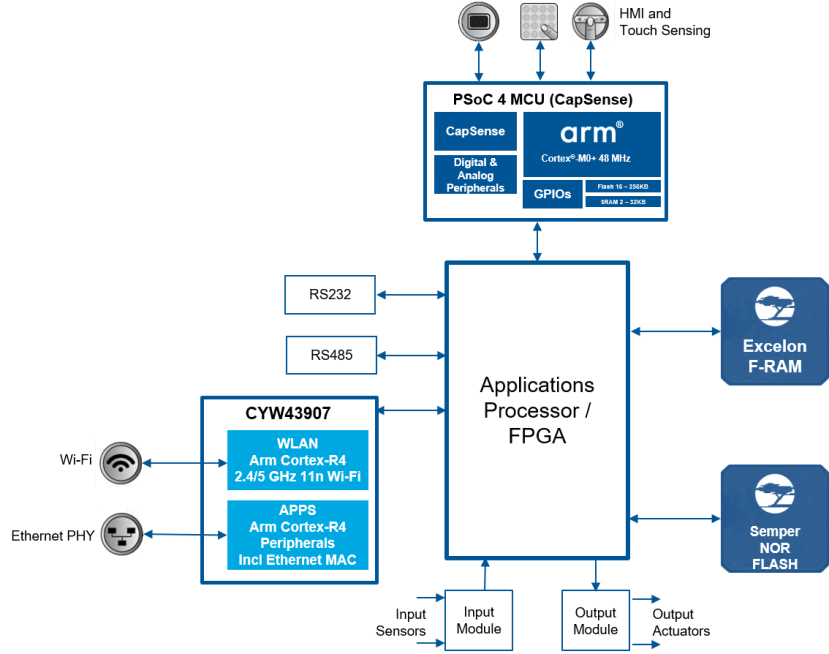
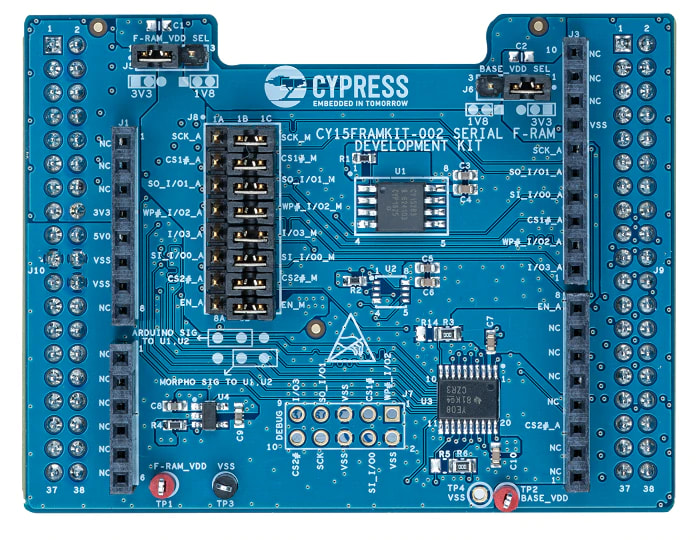
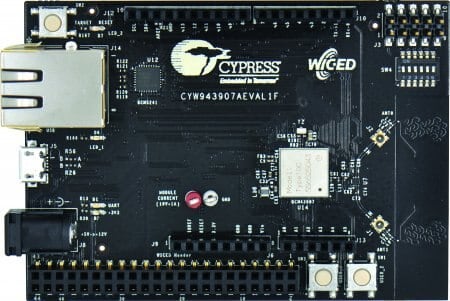
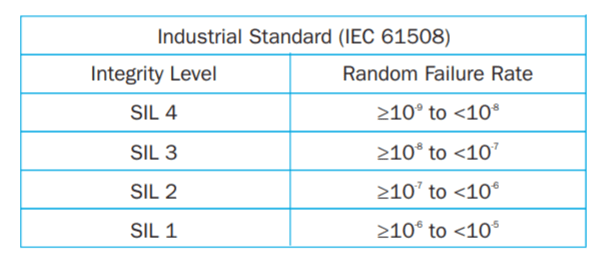
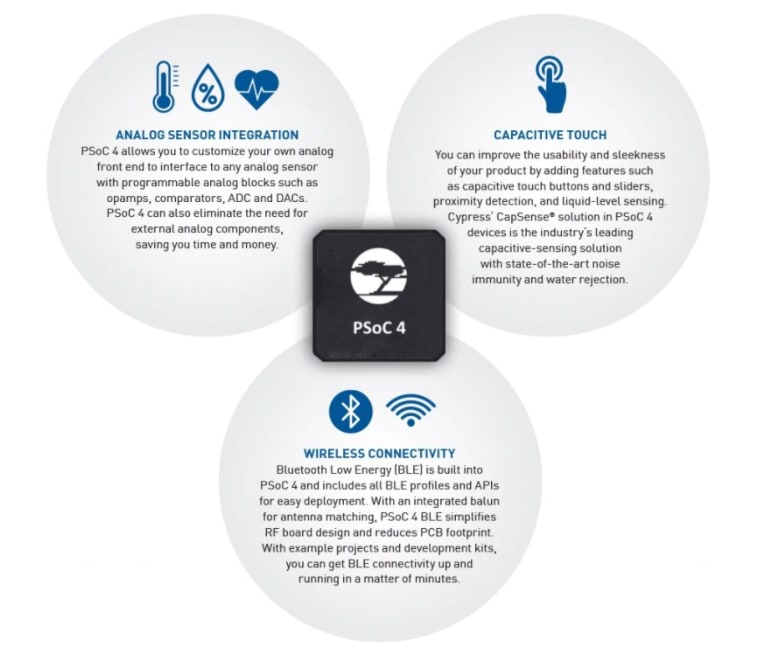

Comments